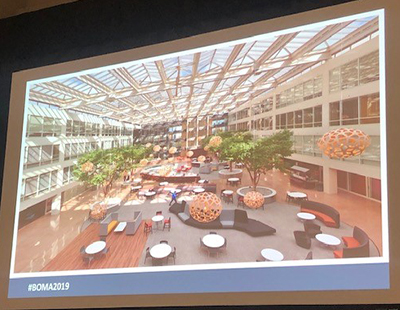The Changing Dynamics of Tenant Engagement
Connecting with building tenants is essential to promoting a healthy work environment, as well as to attracting and retaining new tenants, explained Michael Giese of GlenStar Properties at this year's BOMA International Conference & Expo.
At this year’s BOMA Conference in Salt Lake City, taking place from June 22 to June 25, thousands of attendants gather to learn about the latest trends in commercial real estate. Michael Giese, senior vice president at GlenStar Properties, led a focused discussion on the importance of tenant engagement and how to connect with commercial office tenants.
Giese explained a Modern Engagement system, comprised of six different elements: space, experiencial, social, convenience, wellness and giving. Back in the 70s and 80s, the most important amenities were security and supplying air conditioning into an office space. Heading into the 80s and 90s, the concept of fitness centers, conference rooms and group events gained traction, with tenants becoming more vocal on the amenities they want. After making it through the amenities race in the 90s and early 2000s, we’ve come to the next phase, in which rental space is being taken away in order to create a higher focus on amenities and tenant engagement spaces.
“Back in the day, amenity offerings existed, but in a haphazard way. Not for tenant engagement,” noted Giese. “Now we’re focused on more experiential spaces.”
Building a community in an office environment is on the heels of hospitality and residential. There’s no longer just one big event for everyone, but tailored events instead to promote collaboration among tenants. When discussing how to further tenant engagement across a property, some ideas include holding tenant content meetings, which brings them all together in one space to discuss what types of amenities and services they would be interested in having in the building, and creating a volunteer tenant tradeshow. Here, they can share expertise voluntarily and market to one another, creating a cross-pollination of services in the building.
Tops needs for experiencial spaces:
- Live, work, play
- hospitality feel
- unique and personalized
- customizable
- something for everyone
- technology
“These offerings not only lower the probability of tenants moving out, but also are the differentiator against competitors for potential tenants looking for a space,” said Giese. “It’s vital to package these services into unique spots that stand out within a property, not just known as an add-on.”
Wellness and philanthropy are another important portion of tenant engagement. Not only focusing on fitness amenities, additional wellness features include lounges, coffee shops, game rooms, and fireplaces. Giving back to the community is an additional way to bring tenants together, offering them a chance to not only participate in something of value to their team but find common interests with other tenants in the building in which they can collaborate for a greater purpose.









You must be logged in to post a comment.